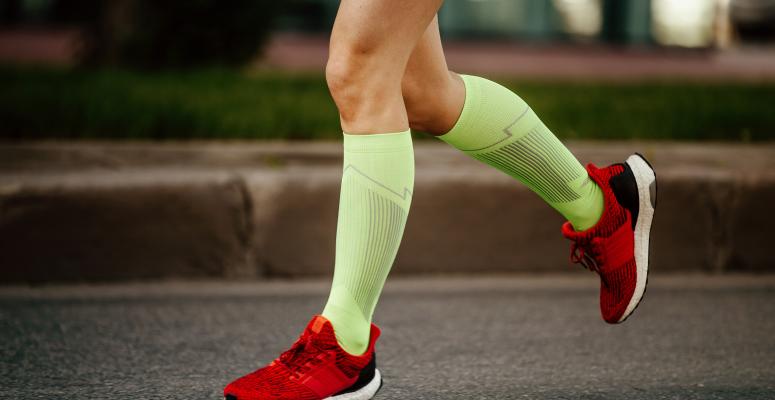
Shin splints, also called tibial stress syndrome, refers to an injury along your shin, the large bone between your knee and ankle. Shin splints affect up to 35% of athletes and military personnel. They are also common among dancers or other groups who have rigorous training routines.
Shin splints are most often a result of repetitive stress, or repeated activity that overworks your muscles, tendons or bone tissue. Excessive force and overstretching causes your tissue to swell against the bone, leading to pain and inflammation. If you don’t give your shins time to rest after injury, your bone can develop tiny cracks that may result in a complete fracture or a stress fracture.
Shin splints can lead to overwhelming pain that runs along the outer edge of your shin, restricting your mobility and activity levels. You may also experience:
- Muscle pain in the front and back of your shin.
- Shooting pain when trying to perform exercise.
- Tenderness or soreness.
- Swelling.
- Weakness in the lower leg and foot.
Thankfully, most cases of shin splints can be treated with noninvasive treatments like rest, ice and physical therapy exercises. You can combine these methods with compression socks to help boost your recovery after shin splints and reduce your pain.
How can compression socks help shin splints?
Compression garments can be an effective treatment for pain and inflammation related to shin splints. In fact, a study showed that compression socks help runners minimize muscle soreness and inflammation, as well as improve performance. In short, compression socks can provide extra support and protect your shins from further injury. They can:
- Improve blood flow — Compression socks apply gentle and equal pressure to your feet and ankles. This pressure can promote circulation in your legs and encourage nutrients in your blood to reach damaged tissue in your shins.
- Reduce swelling — With shin splints, you may notice fluid buildup in your ankles. Swelling is often your body’s natural reaction to injury, but fluid accumulation can prevent healthy circulation. Compression socks can ease the pressure of swelling and control fluid from accumulating further.
- Decrease pain — While compression socks can help reduce swelling and inflammation related to shin splints, they can also reduce related feelings of stiffness and tenderness. Their gradient pressure gradually supports and releases tension in the muscles along the top of your calf to your foot, limiting discomfort.
How else can you treat shin splints?
As much as compression socks can help restore your mobility after a shin splint injury, you can combine compression socks with other treatment methods to maximize your comfort. The following techniques can help protect your lower legs and prevent further injury:
- Rest — After a shin injury, you may need to avoid strenuous activity for between two and six weeks. Resting can give the tissue in your shins time to heal, especially if your tibia bones have endured miniscule cracks. It can be helpful to couple rest with gentle exercise.
- Orthotics — Sometimes, repetitive stress injuries in your legs can be caused by or worsened by poor footwear. Too-tight or too-loose shoes can make your feet unstable and apply extra stress to areas like your shins. Shoe inserts can help stabilize your feet during activity and prevent your feet from repeatedly shifting out of place.
- Physical therapy — Physical therapy exercises and stretches can be crucial to your healing from shin splints. Physical therapists can make sure that you gradually increase your activity levels, starting with low-impact activities. They can focus on improving your mobility and restoring your strength, all while minimizing stress on your shins.
Alliance PTP is ready to help you find top-notch PT for your shin splint pain and swelling
Do you want to take an active step in your shin splint recovery? Physical therapy can work in tandem with your compression socks to relieve your pain and encourage healing. At Alliance Physical Therapy Partners, we’re proudly bringing together physical therapy practices across the country to help people get the high-quality PT they need.
Want to see a physical therapist in person? We can put you in touch with an Alliance PTP partner that’s close to you and that can help you address your shin splint pain.
Not keen on in-person PT sessions or not close to an Alliance PTP partner? No worries. We also offer effective and affordable virtual physical therapy through our Agile Virtual Physical Therapy platform.
Come find help for your injury or chronic condition today!
Get Help at a Location Near You
